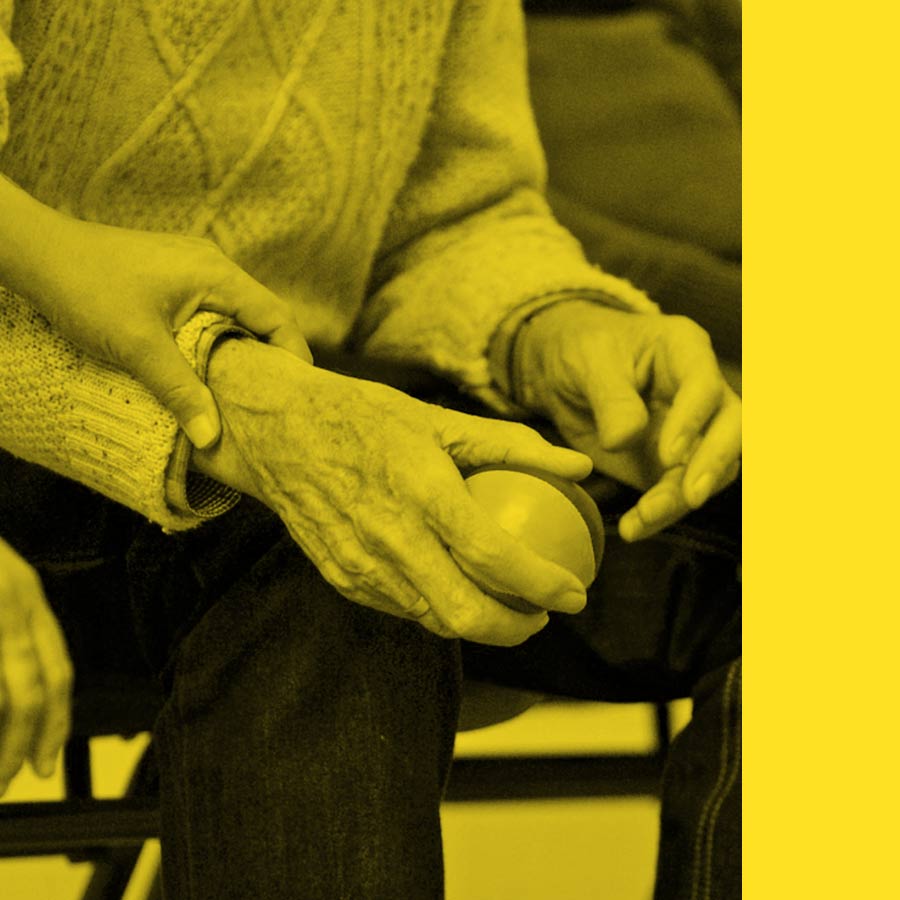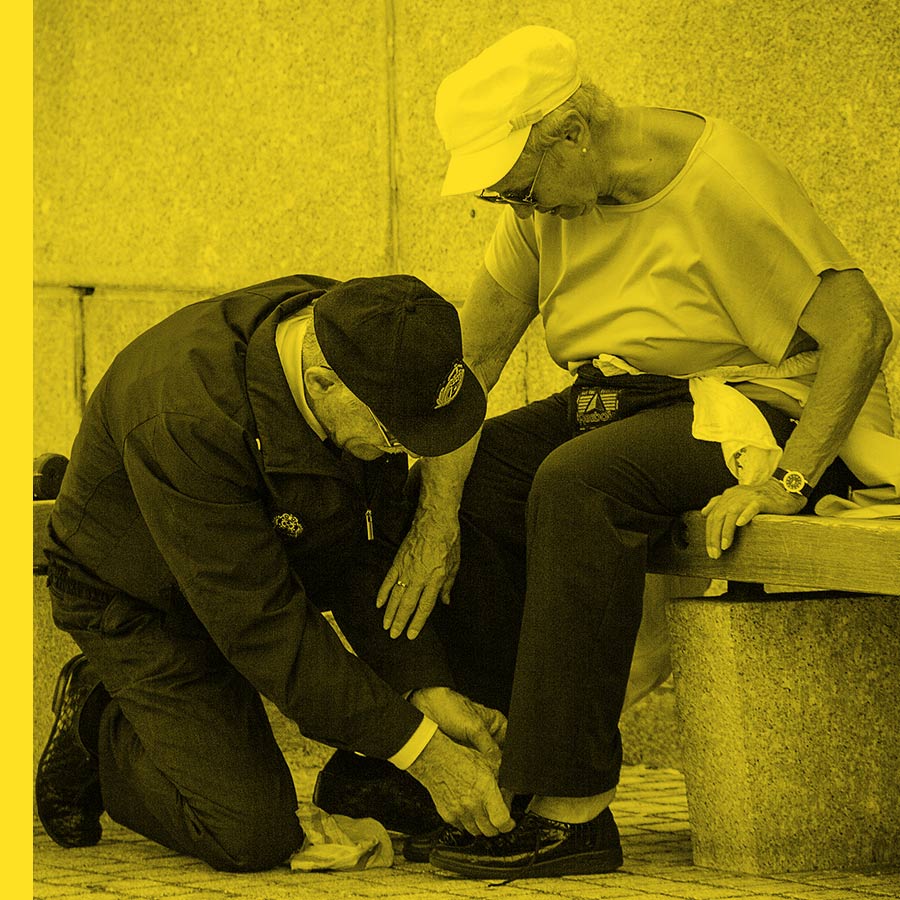Neurodance
mental & physical benefits with dance and music
Direktlink zum Neurodance-Angebot
What is Neurodance®?
Neurodance® is a new registered market. It stands for mental cognitive training through physical dance movements which are supported by music. It’s a healthy training for brain, body and “heart”.

What is Neurodance®?
Neurodance® is a new registered market. It stands for mental cognitive training through physical dance movements which are supported by music. It’s a healthy training for brain, body and “heart”.


Benefits trough Neurodance®
The brain is responsible for many body action and orientation in life. With aging, brain activity is getting more and more important because the brain (gray matter) is not only shrinking. Without prevention, it shrinks even faster. But also the elderly live even longer nowadays and need even more brain training to slow down the brain (gray matter) from shrinking.
In order to be in good mental health and have an autonomous life, the MAS DANCE SCIENCE student Philippe Dick has different training concepts for the brain activity through cognitive movements. This preventive idea is to activate the neurons in the brain with simple effective body movements. The learning of new movements, also called new patterns, will lead to new connections in the brain. In order to push brain activities, participants will work mostly with these senses: auditory, visually, tactile and perceptive. The senses are needed for challenging our brain. The basics for such a training is to have the body in a healthy shape.
The importance of a healthy factor is our physicality behind every movement. Mobility between the joints is a daily necessity for being autonomous in many life situations. A strong body with no restriction is something that shouldn’t be taken for granted. Active training have to be done for healthy results in daily life. Our whole body is not only functional with muscles. There has to be many more factors to be taken into consideration.
Dancing might improve in older adults, lower body bone-mineral content and muscle power. It can also reduce the number of falls and cardiovascular health risks (Justin K. et al., 2009). Neurodance® will also consider the physicality aspects and take the training advantages (low blood pressure and heart rates) to cover this serious risks in the elderly. Slow-motion, in other words walking slowly will enhance balancing and with other coordinative exercises. This will reinforce the neuro system from the body to the brain and resulting in reduction of the risk of falling in daily life. A good functional body needs a fast communication from muscle through the spinal to the brain. It also needs proper working of chemical and electrical reactions in the whole body. For example, the fine-tuning balancing can take electrical and chemical actions in the small part of the back of the head (Cerebellum). This part of the brain takes information from the muscles and then it sends the correction back to the muscles to maintain balancing (Brown & Lawrence 2008). A damaged brain or mal functional brain can have grave consequences. One of them is a disease called Parkinson.
Gammon & Madelain found less often a “froze” in Parkinson disease through 20 Tango dance lessons (2007). This example shows great results how body movement coupled with synchronisation through external influences like music can have a great impact to the brain. Both researchers showed in the same study a shorter reaction in muscular responses for balancing (Gammon et al., 2007).
All this mentioned with physicality and brain activity issues is why Neurodance® will be a great choice for a broad and healthy prevention in life!
Benefits trough Neurodance®
The brain is responsible for many body action and orientation in life. With aging, brain activity is getting more and more important because the brain (gray matter) is not only shrinking. Without prevention, it shrinks even faster. But also the elderly live even longer nowadays and need even more brain training to slow down the brain (gray matter) from shrinking.
In order to be in good mental health and have an autonomous life, the MAS DANCE SCIENCE student Philippe Dick has different training concepts for the brain activity through cognitive movements. This preventive idea is to activate the neurons in the brain with simple effective body movements. The learning of new movements, also called new patterns, will lead to new connections in the brain. In order to push brain activities, participants will work mostly with these senses: auditory, visually, tactile and perceptive. The senses are needed for challenging our brain. The basics for such a training is to have the body in a healthy shape.
The importance of a healthy factor is our physicality behind every movement. Mobility between the joints is a daily necessity for being autonomous in many life situations. A strong body with no restriction is something that shouldn’t be taken for granted. Active training have to be done for healthy results in daily life. Our whole body is not only functional with muscles. There has to be many more factors to be taken into consideration.
Dancing might improve in older adults, lower body bone-mineral content and muscle power. It can also reduce the number of falls and cardiovascular health risks (Justin K. et al., 2009). Neurodance® will also consider the physicality aspects and take the training advantages (low blood pressure and heart rates) to cover this serious risks in the elderly. Slow-motion, in other words walking slowly will enhance balancing and with other coordinative exercises. This will reinforce the neuro system from the body to the brain and resulting in reduction of the risk of falling in daily life. A good functional body needs a fast communication from muscle through the spinal to the brain. It also needs proper working of chemical and electrical reactions in the whole body. For example, the fine-tuning balancing can take electrical and chemical actions in the small part of the back of the head (Cerebellum). This part of the brain takes information from the muscles and then it sends the correction back to the muscles to maintain balancing (Brown & Lawrence 2008). A damaged brain or mal functional brain can have grave consequences. One of them is a disease called Parkinson.
Gammon & Madelain found less often a “froze” in Parkinson disease through 20 Tango dance lessons (2007). This example shows great results how body movement coupled with synchronisation through external influences like music can have a great impact to the brain. Both researchers showed in the same study a shorter reaction in muscular responses for balancing (Gammon et al., 2007).
All this mentioned with physicality and brain activity issues is why Neurodance® will be a great choice for a broad and healthy prevention in life!

Never too late to train your brain!
Have you forgotten something? You feel without energy, struggling with simple things like: dressing, carrying bags for cooking stuff or even take a shower in the bathroom?
These normal skills become in social life more important. This is also the reason that in this course we will also interact with other people in a playful and explorative way. Researchers like Godde et al., have great findings about brain network. The plasticity of neuron mechanisms will be operational. In every age, this is done through multi-sensory stimulation training (2002). This means that Neurodance® will help prevent and also as an example, reduce progression of Alzheimers or simply increase brain networking. This process has a name “plasticity”. Dancing with a partner to the music leads to prevention or even as a rehabilitation for prefrontal function in the brain (Preminger, 2012). This are good news. It means a real quality change of life.
So what does actually happen in the brain when we apply Neurodance®?
The synchronisation of music & movement changes the blood flow in the brain (Brown & Parsons 2008). Even for a simple step, the coordination patterns in the brain is so complex. New unknown movements in dance will surge as such blood flow changes. Dancing to music has multiple cognitive functions such as: perception, emotion, executive functions (descision making), memory and motor skills that leads to a large brain network activation (Foster P. 2013). This means that our brain will make new connections and hopefully gain enough “control” about our desired actions in life.

Never too late to train your brain!
Have you forgotten something? You feel without energy, struggling with simple things like: dressing, carrying bags for cooking stuff or even take a shower in the bathroom?
These normal skills become in social life more important. This is also the reason that in this course we will also interact with other people in a playful and explorative way. Researchers like Godde et al., have great findings about brain network. The plasticity of neuron mechanisms will be operational. In every age, this is done through multi-sensory stimulation training (2002). This means that Neurodance® will help prevent and also as an example, reduce progression of Alzheimers or simply increase brain networking. This process has a name “plasticity”. Dancing with a partner to the music leads to prevention or even as a rehabilitation for prefrontal function in the brain (Preminger, 2012). This are good news. It means a real quality change of life.
So what does actually happen in the brain when we apply Neurodance®?
The synchronisation of music & movement changes the blood flow in the brain (Brown & Parsons 2008). Even for a simple step, the coordination patterns in the brain is so complex. New unknown movements in dance will surge as such blood flow changes. Dancing to music has multiple cognitive functions such as: perception, emotion, executive functions (descision making), memory and motor skills that leads to a large brain network activation (Foster P. 2013). This means that our brain will make new connections and hopefully gain enough “control” about our desired actions in life.


Brain, body and "heart"!
Neurodance® involves brain, body and heart. It will be life-enriching for YOU!
Last but not least, the social aspect “heart” feelings and good moments with other people will have one other great impact for a good life. But what does this have to do with the brain? The Synchronisation of movements with others will foster social cohesion (Brown & Parsons 2008). This explains that the brain is able to synchronize beat (music) and movement for being rhythmic. Rhythmic is something to be with other people in connection and therefore be in the same “mood” or “flow”. This subtile but important factor suggests acceptance with other people. The agreement to something pushes even more the social aspects. Dancing activities further more social and emotional interaction (Jan Christoph et al., 2013). In this class, we will have pairs and group tasks to synchronize a lot of senses for the brain and also makes new friendships.
Neurodance® will be enriching through consideration of these three important aspects: brain, body and “heart”!
So don’t hesitate to visit a free trial training with us elderly!
MOVE WITH US!
Klick here for a Neurodance® class with Philippe.
Brain, body and "heart"!
Neurodance® involves brain, body and heart. It will be life-enriching for YOU!
Last but not least, the social aspect “heart” feelings and good moments with other people will have one other great impact for a good life. But what does this have to do with the brain? The Synchronisation of movements with others will foster social cohesion (Brown & Parsons 2008). This explains that the brain is able to synchronize beat (music) and movement for being rhythmic. Rhythmic is something to be with other people in connection and therefore be in the same “mood” or “flow”. This subtile but important factor suggests acceptance with other people. The agreement to something pushes even more the social aspects. Dancing activities further more social and emotional interaction (Jan Christoph et al., 2013). In this class, we will have pairs and group tasks to synchronize a lot of senses for the brain and also makes new friendships.
Neurodance® will be enriching through consideration of these three important aspects: brain, body and “heart”!
So don’t hesitate to visit a free trial training with us elderly!
MOVE WITH US!
Klick here for a Neurodance® class with Philippe.









